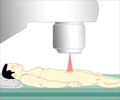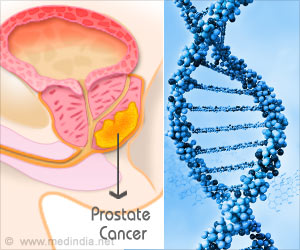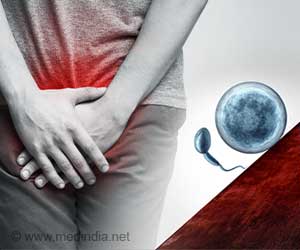Measuring a man’s daily calcium intake is an effective way of identifying prostate cancer patients with a higher than average risk of osteoporosis
Measuring a man’s daily calcium intake is an effective way of identifying prostate cancer patients with a higher than average risk of osteoporosis, according to a research.
Researchers from the Autonoma University School of Medicine, Barcelona, Spain, looked at a cross-section of 372 men with prostate cancer. 72 per cent were receiving androgen-deprivation therapy (ADT) and 28 per cent had undergone a radical prostatectomy. Their average age was just under 70.They found that 49 per cent of the men had osteoporosis, including 55 per cent of those who had received the ADT hormone therapy and 35 per cent of those who had had a prostatectomy.
These figures are considerably higher than the prevalence of osteoporosis in the general male population, where it’s estimated that about 20 per cent of all male osteoporosis cases occur in the 61 to 70 age group.
A dietary questionnaire revealed that only seven per cent of the men were consuming more than 1000 mg of calcium a day - the average daily calcium intake was 610mg in men with osteoporosis and 683mg in those without.
These levels are well below the 1000mg recommended for all 25-65 year-olds by the US National Institutes of Health and the 1500mg recommended for men over 65.
"Our research showed a significant relationship between a low daily calcium intake and higher levels of osteoporosis in men with prostate cancer" says lead researcher Dr Jacques Planas from the University’s Department of Urology.
Advertisement
"What was particularly interesting was the fact that more than a third of the patients who hadn’t received hormone treatment also developed osteoporosis."
Advertisement
Links to ADT hormone therapy have also been reported, but the Barcelona study is thought to be the first to look at using daily calcium as a diagnostic tool to identify prostate cancer patients who face an increased risk of osteoporosis, including those who have not received ADT.
"Men account for about a third of all hip fractures, but they are much more likely to die after an injury of this nature than women, so it is important to identify possible risks at an early stage" adds Dr Planas.
Hormone treatment ranged from 12 to 98 months, with an average of just over 42 months. Men with bone disorders or secondary causes of osteoporosis were excluded from the study.
As well as the dietary questionnaire, the men taking part in the study had their bone mineral density measured at the lumbar spine and four different hip sites in line with the guidelines developed by the International Society for Clinical Densitometry for the diagnosis of osteoporosis.
"We carried out our research to discover whether there was a relationship between low daily calcium intake and reduced bone mineral density, which there clearly was" say Dr Planas.
"We also wanted to know if daily calcium intake could be used as a prognostic factor for osteoporosis, especially for patients receiving ADT. Our research suggests that it does provide a good pointer to whether a prostate cancer patient also has osteoporosis."
The authors suggest that patients with prostate cancer should be routinely advised to take at least 1000mg of calcium a day and that their bone mineral density should be assessed, particularly before starting ADT, and monitored at regular intervals after the treatment begins.
Source-Eurekalert
SRM/V




![Prostate Specific Antigen [PSA] Prostate Specific Antigen [PSA]](https://www.medindia.net/images/common/patientinfo/120_100/prostate-specific-antigen.jpg)






